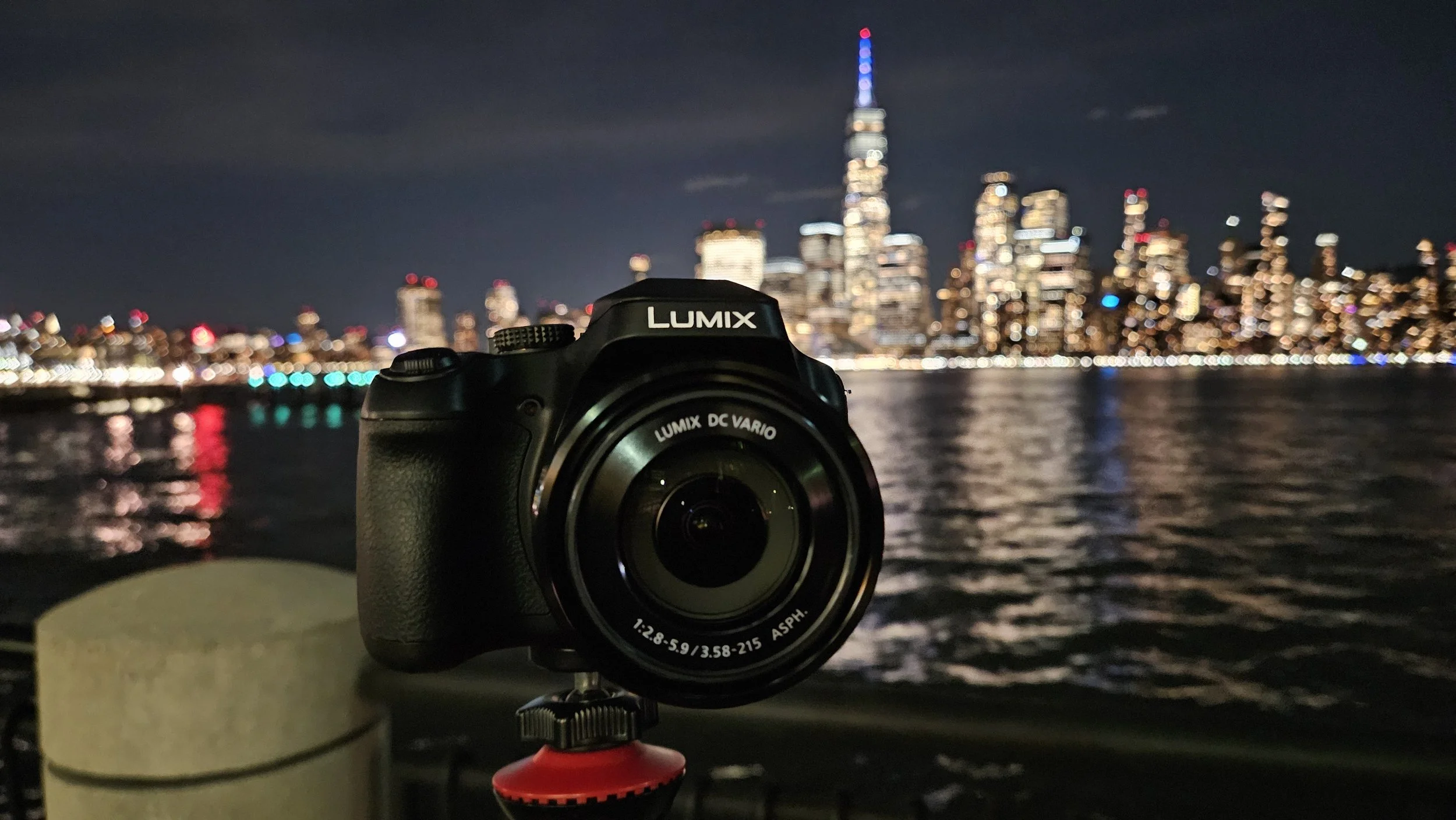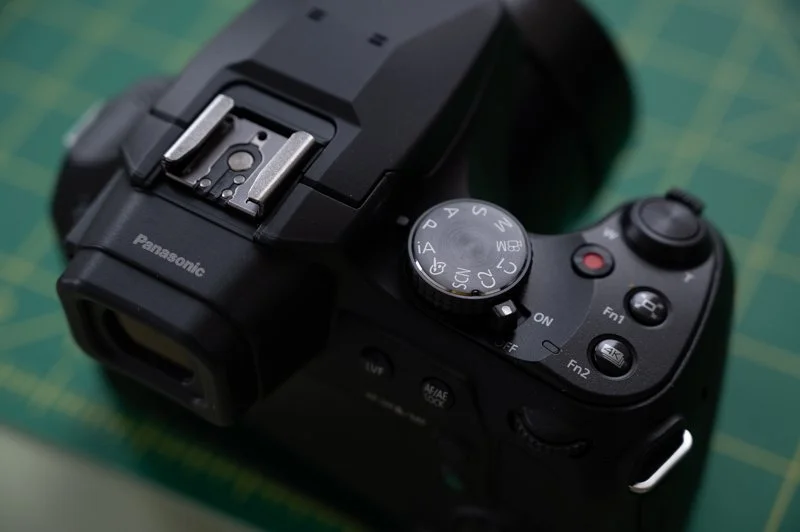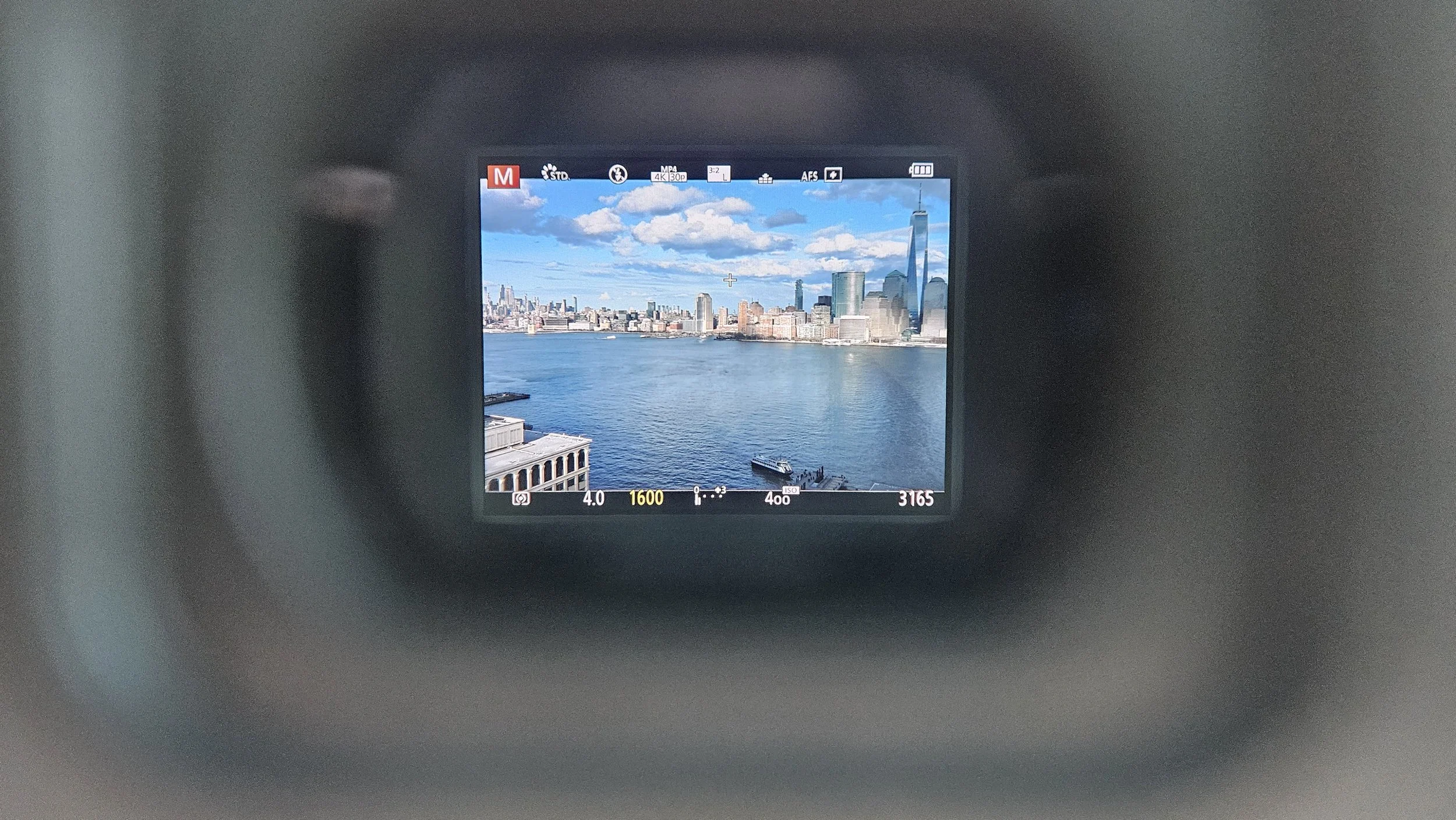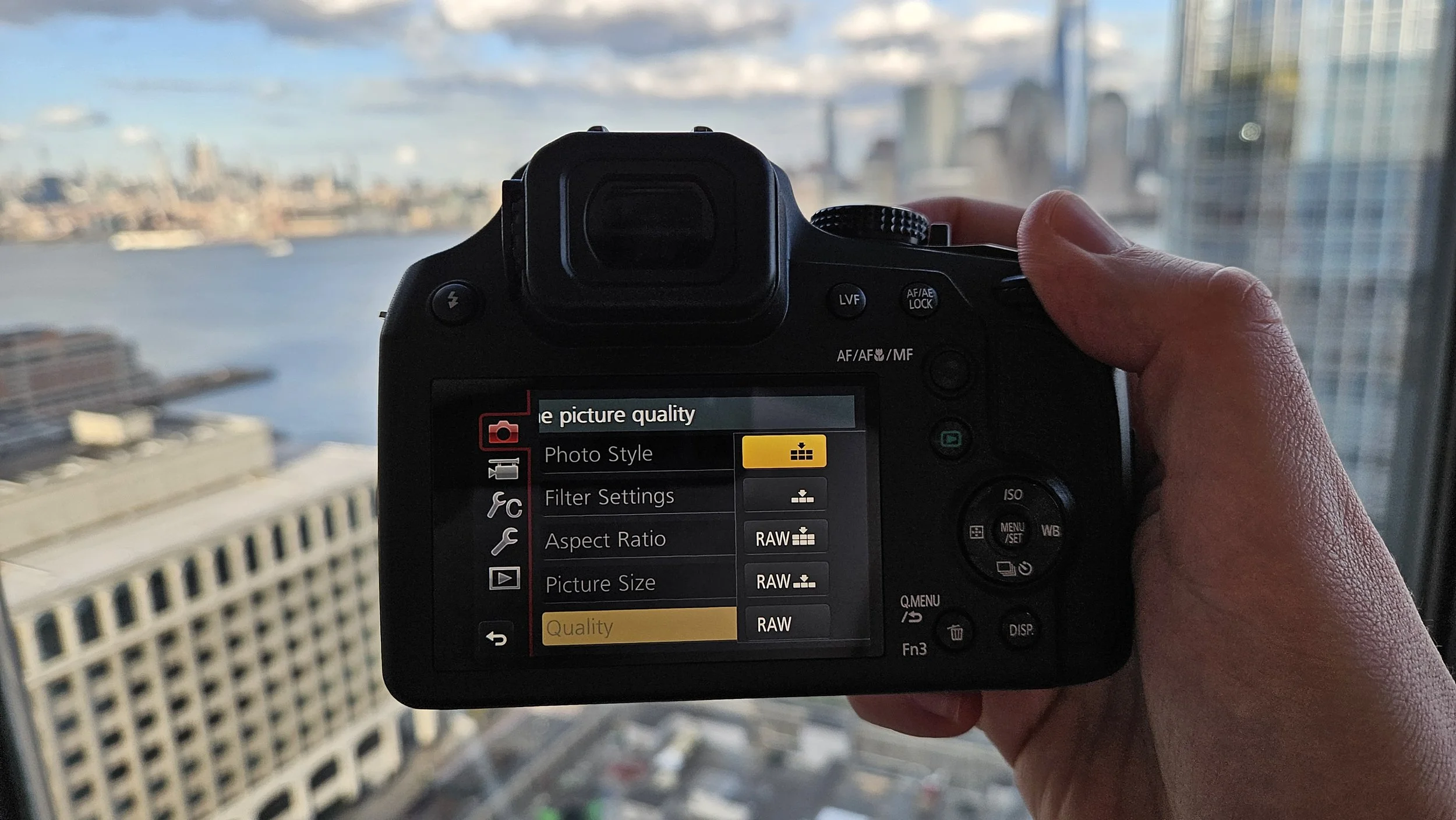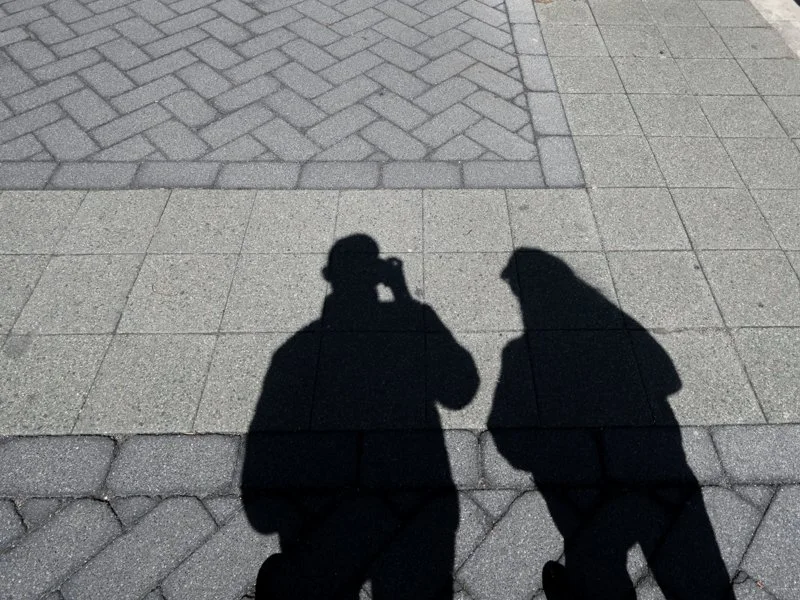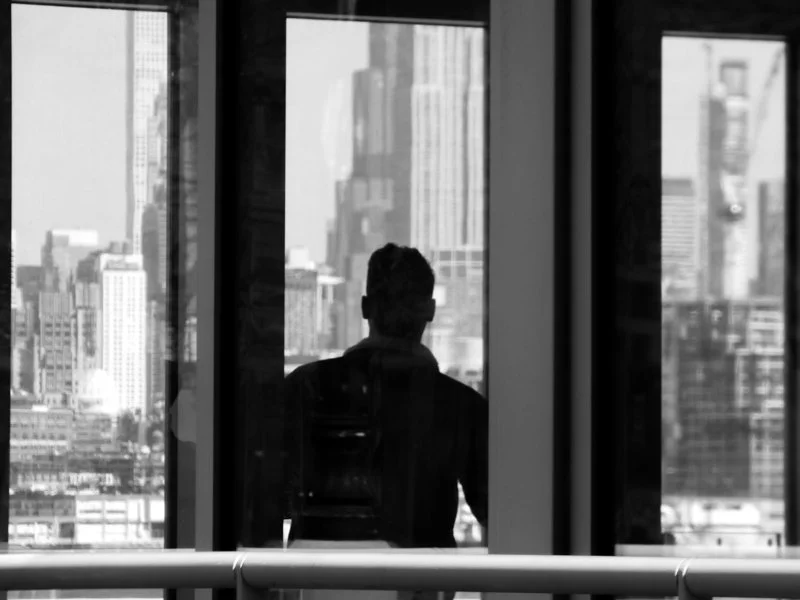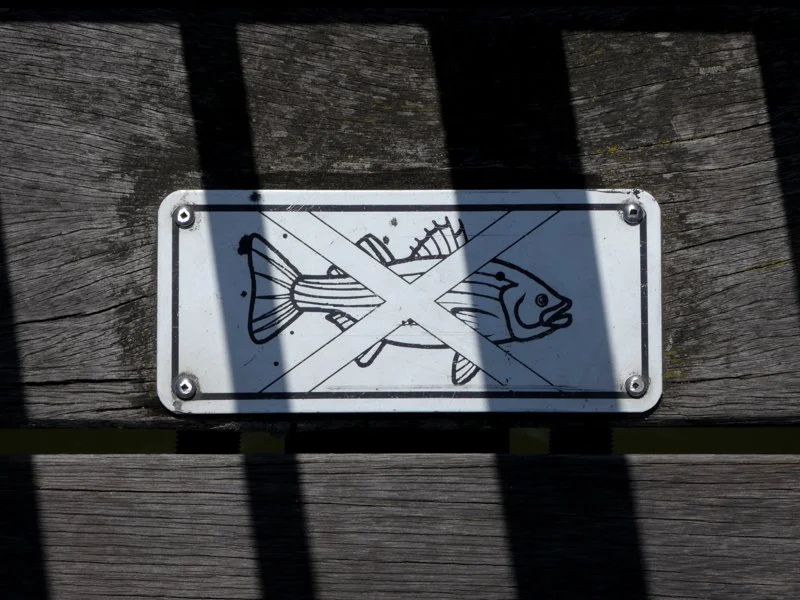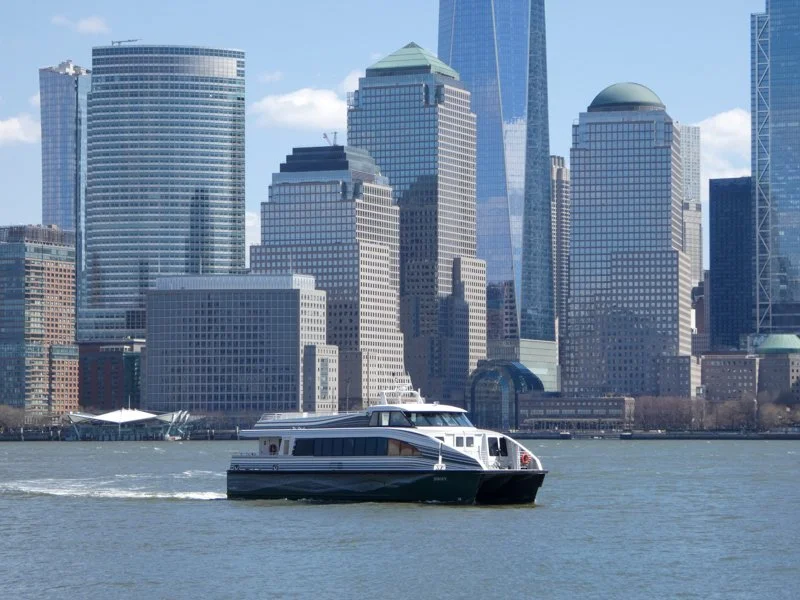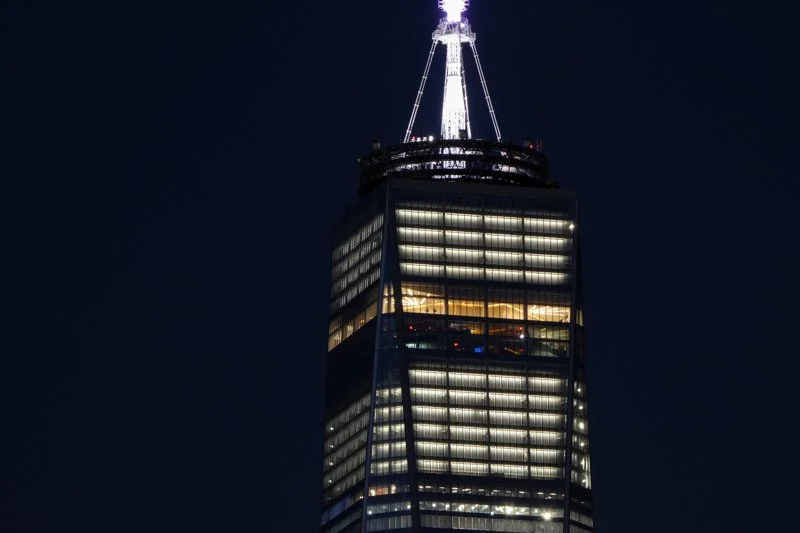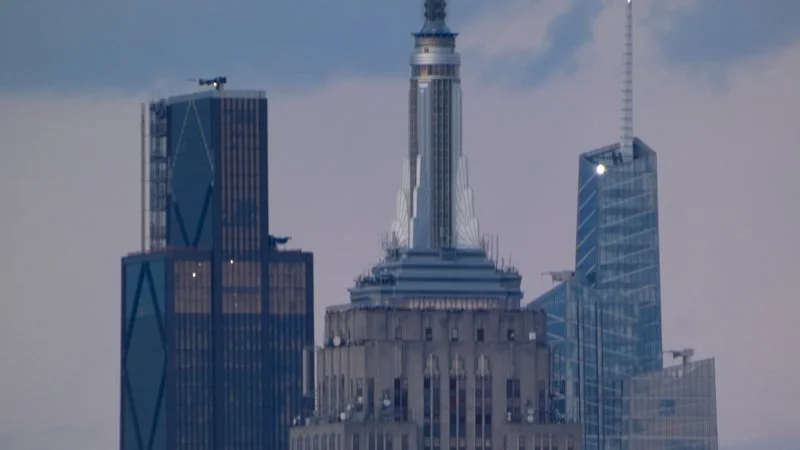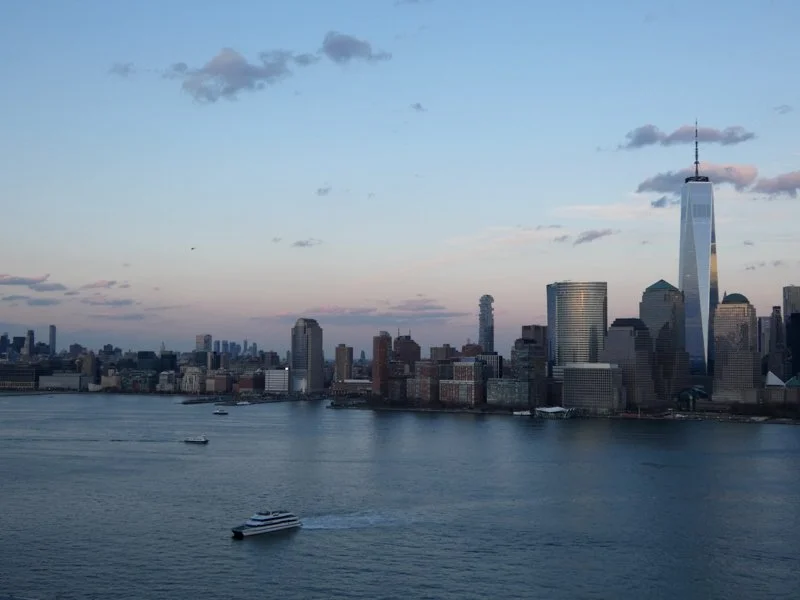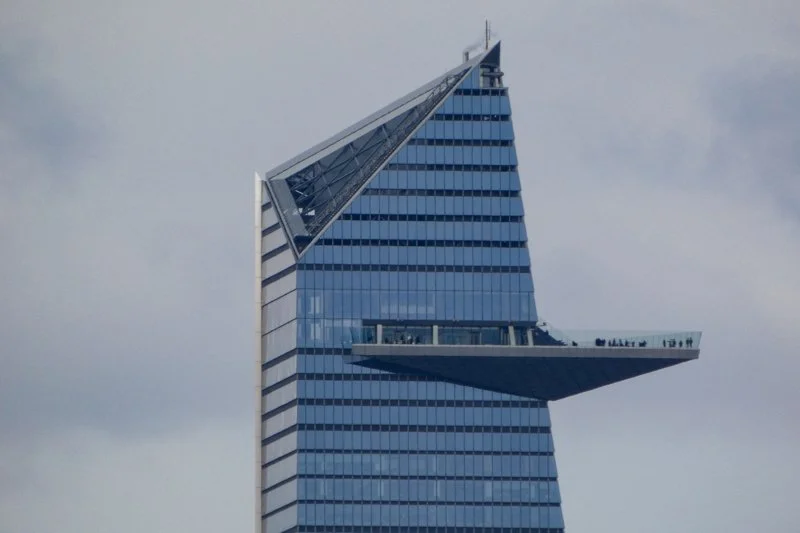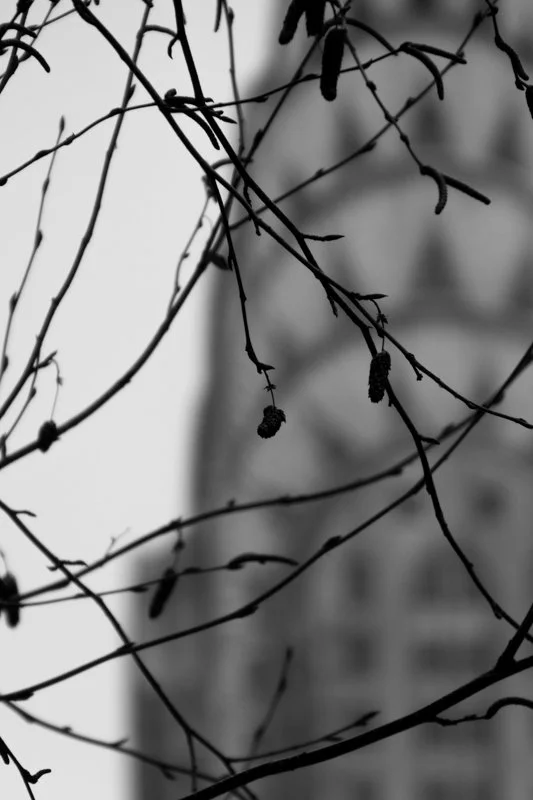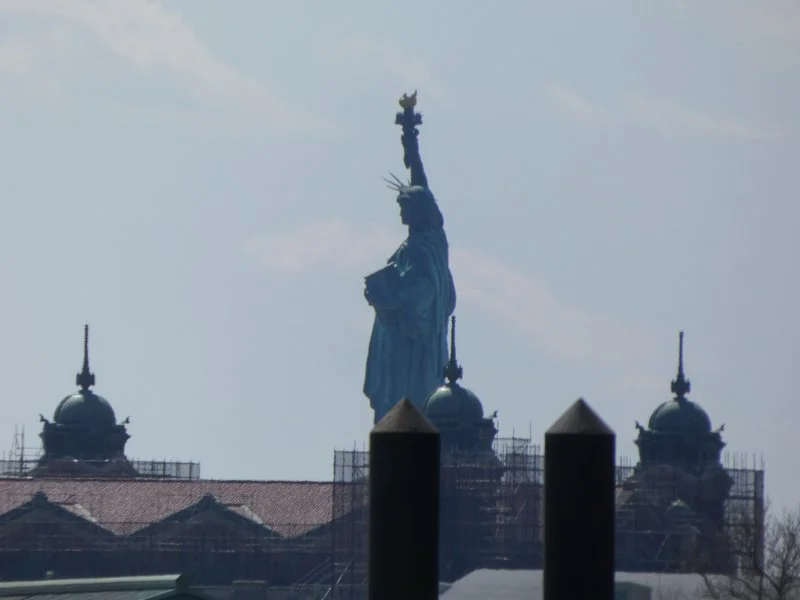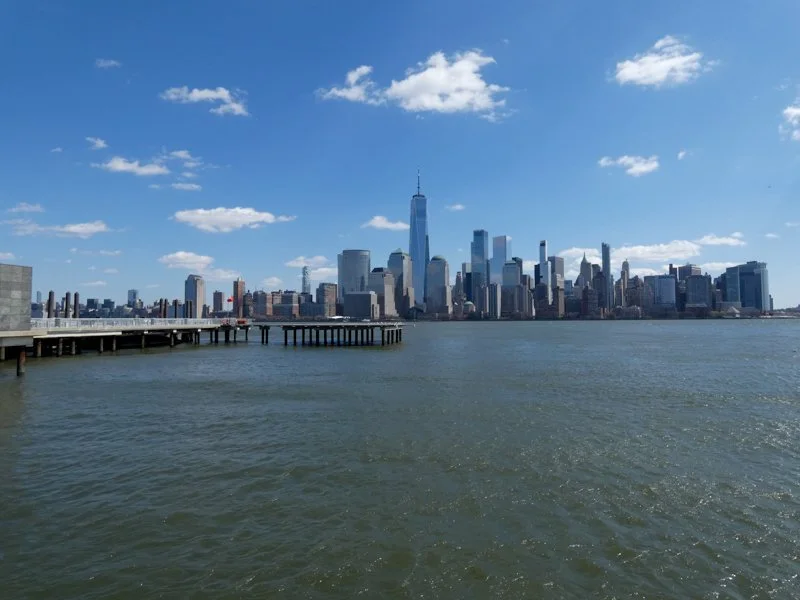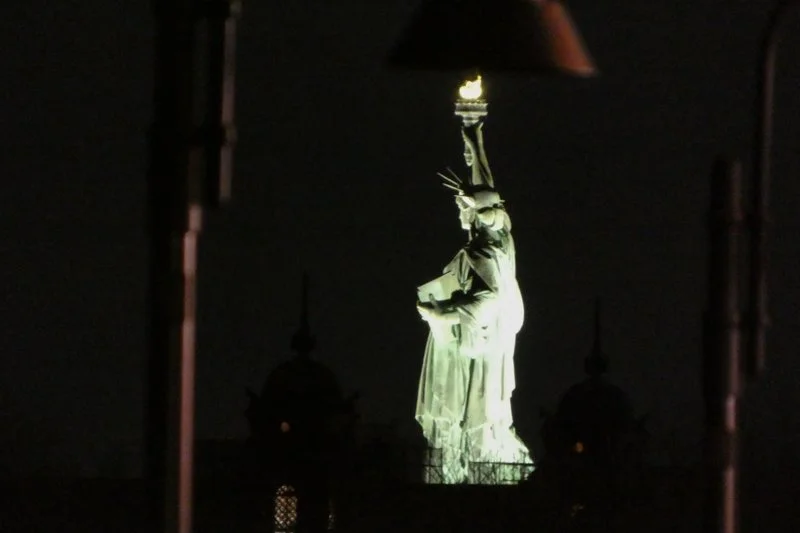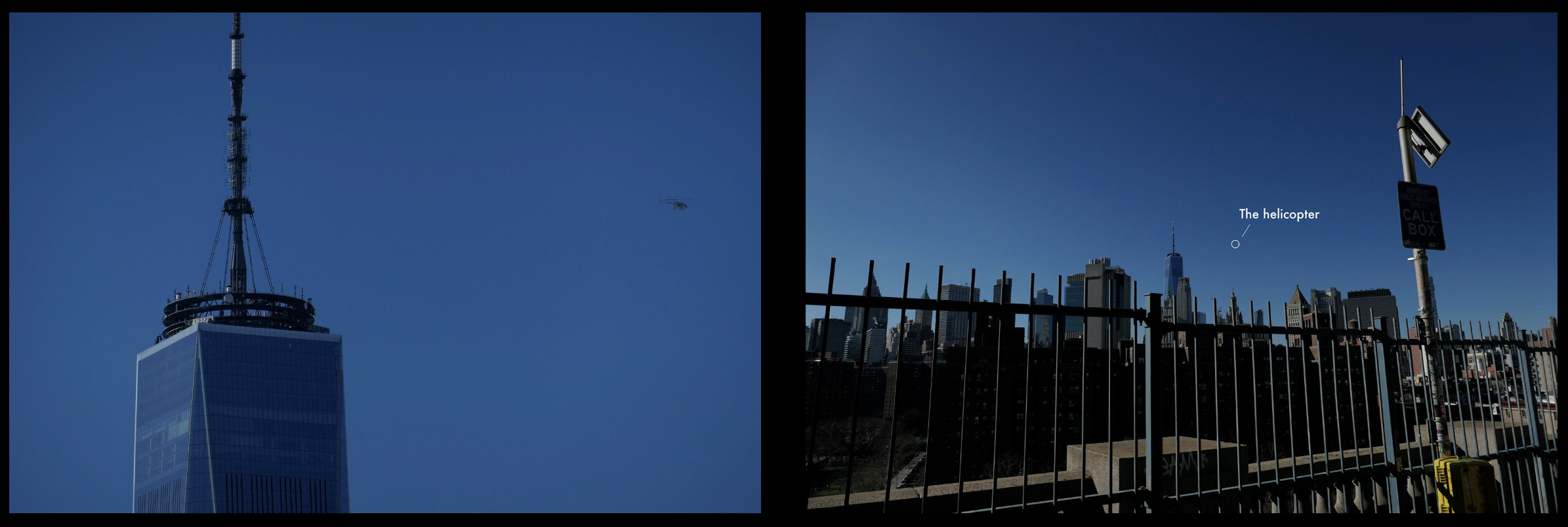Panasonic Lumix FZ80D Review (2025): Big Zoom, Small Budget, No Fun
Rating: ★★★☆☆ (3/5 Stars)
I’m going to be very honest with you: I’ve never cared for bridge cameras. Those are cameras that bridge the gap between point-and-shoot cameras and those bulkier DSLRs and mirrorless cameras. In today’s camera market, there’s just not much that they can do that a point-and-shoot can’t for less money or the tons of things that a mirrorless camera can for slightly more money. I’ll get into definitions and all that below, but here’s my one sentence review of the Panasonic Lumix FZ80D: it’s just not worth the money for the features, the form, and the fun.
However, if you’ve been eyeing a travel camera that won’t drain your wallet or weigh down your backpack, the Panasonic LUMIX FZ80D might be your perfect match. You’re not me, maybe you don’t care about the same things I do and this camera is for you after all.
I’ll be very honest in my assessment of the FZ80D below since, as of 2025, it’s still one of the most practical cameras out there for casual shooters, especially those who want solid zoom, decent video, and simplicity without the need for interchangeable lenses. It’s often available for under $400, making it one of the best budget-friendly superzoom cameras on the market.
Let’s get into the specs and handling of the FZ80D.
Full Specs
| Brand | Panasonic |
| Model Name | DC-FZ80DK |
| Display | 3 Inch LCD (Fixed) |
| Image Sensor | 1/2.3" MOS Sensor |
| Megapixels | 18.1 MP |
| Autofocus | Contrast Detection, 39 points, Automatic AF |
| Image Aspect Ratio | 4:3, 3:2, 16:9 |
| Video Format | MP4 |
| Video Resolution | 4K (30p) |
| Image Stabilizer | Optical IS |
| Lens | f = 3.58 mm to 215 mm (35mm equivalent: 20 mm to 1200 mm) |
| Lens Max. Wide | f/2.8 to f/8.0 |
| Lens Max. Tele | f/5.9 to f/8.0 |
| Optical Zoom | 60x |
| Shutter Speed | 4s – 1/2000 (Mechanical), 1s – 1/16000 (Electronic) |
| Metering | Multiple, Center Weighted, Spot |
| Viewfinder | EVF |
| Flash | Yes |
| Microphone | Stereo |
| Speaker | Monaural |
| Recording Format | JPEG, RAW, MP4, AVCHD |
| Audio Compression | AVCHD: Dolby Audio, MP4: AAC |
Those numbers might not mean anything to you, but let me explain some of the key ones:
Sensor: Not stellar. It’s one of the smallest on the market for a camera of this price, making it lousy when shooting indoors and darker areas. The APS-C sensor, which is fairly standard in entry-level DSLRs and mirrorless cameras that cost about $500 has a surface area roughly 12-15x the one in this camera. So, pretty tiny.
Megapixels: 18MP is perfectly fine for the internet, but just know that the standard has been over 20MP for several years for compacts. You likely won’t want to print photos as large as 16x20, but they’ll look just fine on a screen.
Video: It’s really great. Getting 4K video at 30fps is fantastic for the price. Anything less would have killed this camera.
Lens: It’s a pretty standard thing with zoom lenses.The wider your shot, the more light you’re able to get through the lens aperture to the sensor. This gets reduced that further you zoom. This is measured by the f/2.8 at the widest and f/5.9 at the closest. What it basically means is that you can’t open the aperture as wide zoomed in as you can zoomed out. This will require you to change your ISO sensitivity (how sensitive the sensor is to light; introduces grain) or shutter speed (introducing possible blur).
Zoom Range: Very good, but with a caveat. The cropped sensor adds a magnification effect to the lens. Meaning that 1200mm maximum range would be the equivalent of about 250mm on a full frame camera. The difference between them is a few hundred dollars more for the full frame camera, and less blurriness, too.
Unboxing and First Impressions
Out of the box, the Lumix FZ80D feels large and bulky. It’s definitely not a pocket camera. This is a bridge-style model with a DSLR-style grip and a long fixed lens. The lens extends far from the camera when at its highest zoom. The size is a fair tradeoff for the zoom, which is kind of an incredible 20–1200mm zoom range. If you’re into capturing everything from wide landscapes to close-ups of wildlife or architectural details on buildings, then this zoom is a huge asset. I would even say that it’s likely the determining factor when purchasing this camera.
While the body is bulky, it’s surprisingly light. It fits well in a backpack or cross-body sling. I found it to be almost too light. It didn’t balance well in my hand when holding the grip. I sometimes carry my interchangeable lens cameras by putting my fingers into the groove of the grip. I can’t do that with the FZ80D without dropping it. It’s heavier on it’s left side than on the grip side.
It’s not a minimalist’s camera. The buttons aren’t exactly butter smooth when you press them. The button that pops the flash on the left side of the camera took several presses to activate, with the flash making an unpleasant sound. The “wide” and “telephoto” zoom switch was nice, however, along with the aperture selector wheel which can be pressed in to cycle between aperture, shutter speed, and exposure +/- in video mode.
I also appreciate the red “record” button not being absent, making it easier to start shooting in any mode.
Lumix FZ80D Accessories
The camera comes with the following items (though you’ll likely want a few others):
Lens cap and string
Lumix shoulder strap
Charging cable (USB-C) and wall plug
Battery (you’ll need a spare)
I included a full list of other accessories you’ll want below, but at the very least you’ll need an SD card, spare battery, and case. Out of the box, you’ll be able to shoot for a few hours of regular use, resulting in up-to 330 photos according to Panasonic. In my experience, shooting photos and 4K video gave me about an hour and a half of power.
Real-World Use of the Lumix FZ80D
I used this camera for a couples of days around my neighborhood and in Midtown Manhattan on my lunch break. I’ve never said this before, but I was glad to not have a sunny day so that I could test the camera in different conditions, both bright sun, overcast sky, night, etc.
FZ80D Controls Are Actually Good
The owners manual lists 34 different buttons and parts, but if you want to start shooting immediately, you’ll only need to learn a few to get started. For experienced photographers, you can move the dial to Manual and start shooting. Beginners can stick to the “iA” mode, which is Panasonic for “Automatic.” The auto mode on the Lumix FZ80D does a decent job, and has a surprisingly quick autofocus. I did miss a handful of shots due to blurriness, but nothing that I expected this camera to handle; it very clearly is not perfect in low light and I was in a shady area at the time.
In any of the other modes, the rear dial is easy to control with your thumb and quickly selects the appropriate aperture or shutter speed. ISO requires the press of a button on the selector. The zoom lever was also easy to use and I was surprised by how quickly the camera zoomed in and out. There was absolutely no lag.
The display is bright and I actually ended up using the electronic view finder quite a bit. You can select it by pushing the LVF button that’s to the right of the viewfinder. Unfortunately, you can only use the EVF or the screen, but not both. And it doesn’t automatically switch if you get close to the view finder. It was particularly useful when I was taking photos on the street and didn’t want to broadcast to all the passersby exactly what I was shooting.
It’s a shame that the camera is uncomfortable to hold for long periods of time, because the controls were good for the body.
Does the Lumix FZ80D shoot RAW?
It does, but I’m not sure why you would bother. The FZ80D has several photo options, most of them around the aspect ratio. The camera default is to shoot in 4:3 which is why most of the photos below look so boxy. I’m not used to that aspect ratio after so many years of 16:9. But you can choose both of those, along with 3:2. Several resolutions, formats, and qualities also exist denoted by different icons in the menu. And yes RAW is a possibility in a .RW2 file. The large jpegs take up roughly 8MB of space while the RAW files take up about 21MB.
Again, my two cents is that this isn’t the camera you use if you want RAW photos. You want a better camera for that. Just enjoy your jpegs. Maybe even slap an in-camera filter on it.
Photos Taken with the FZ80D
Here the great thing about the FZ80D: even with a tiny sensor and 18 megapixels, it can still produce some great shots on a sunny day. I took the photos below on the Jersey City waterfront at the end of March. The sun was out and the sky was actually blue; a perfect time to test a camera. You’ll also find some examples of photos at night, in monochrome, but none of the camera’s built-in filters. You can experiment with those yourself. Try the sepia!
Of course, I though it would be helpful to show you the difference between the zoom at 20mm and at 1200mm. After all, you’re almost certainly buying this camera for the price and the zoom.
The photos below are a comparison of the camera’s ability to zoom from 20mm to 120mm (60x optical zoom). I shot these on auto, but keep in mind that the f-stop changes progressively from f/2.8 at 20mm to f/5.9 at 1200mm when shooting.
As you can see, it performs admirably in bright conditions, but things start getting a bit wonky at night and in the shade. The sensor is much too small to accommodate enough light for a full gamut of what you might experience when traveling, or even just daily photography.
Now that the photos are out of the way, let’s take a look at the camera’s second bright spot: it’s 4K video.
FZ80D is Surprisingly Capable for 4K Video Clips
The FZ80D shoots 4K at 30fps, and the video quality is solid, and I say this again, especially outdoors with good light. Autofocus is quick and mostly reliable, though it can hunt if subjects move unpredictably. You can see what I mean in the video below.
There’s a built-in microphone but no external mic input, which limits its vlogging potential a bit. The lack of tilting screen also limits your vlogging potential. But you can certainly use the camera as a vlogging cam if you so choose.
Seeing a camera in action is often more helpful than just reading about it. Below are two videos: a 1080p video test and a 4K video test of the Lumix FZ80D to show how it performs in real-world shooting scenarios.
Lumix FZ80D Comparison Chart
I wanted to help you make a decision based on a few common factors. I assume that price is important to you if you’re looking at this camera. However, the thing about a bridge camera like the Lumix FZ80D is that you don’t need to spend much more to get a far more versatile camera, albeit without the superzoom.
Check out some of the cameras that I’ve used in the past that have price point that’s comparable, but offer more customizability (is that a word?) in the form of interchangeable lenses, larger sensors, or more megapixels. Several of these cameras are even a few years older than the Lumix FZ80D.
And sorry to mobile users because this table is going to look terrible. Maybe rotate your screen or switch to desktop mode in browser to see the full thing.
| Feature | Lumix FZ80D | Canon EOS Rebel T7 | Canon EOS R100 | Lumix ZS99 | Lumix G85 | Lumix ZS200D |
|---|---|---|---|---|---|---|
| Price Range | $380–$480 ✅) | $380–$480 ✅ (with lens) | $399–$600 (with lens) | $500 | $500–$650 (with lens) | $200–$800 (used) |
| Year Released | 2024 | 2018 | 2023 | 2025 | 2016 | 2023 |
| Camera Type | Bridge (Superzoom) | DSLR (APS-C) | Mirrorless (APS-C) | Compact Travel Zoom | Mirrorless (MFT) ✅ | Compact Zoom w/ 1" |
| Zoom Range | 60x (20–1200mm) ✅ | Depends on lens | Depends on lens | 30x (24–720mm) | Depends on lens | 15x (24–360mm) |
| Sensor Size | 1/2.3" | APS-C ✅ | APS-C ✅ | 1/2.3" | Micro Four Thirds | 1" |
| Megapixels | 18.1 MP | 24.1 MP ✅ | 24.1 MP ✅ | 20.3 MP | 16 MP | 20.1 MP |
| Screen | 3.0" LCD, fixed | 3.0" LCD, fixed | 3.0" LCD, fixed | 3.0" LCD, tilting | 3.0" fully articulating ✅ | 3.0" LCD, tilting |
| Viewfinder | EVF | Optical ✅ | EVF | EVF | EVF | EVF |
| Video | 4K/30p ✅ | 1080p/30p | 4K/24p | 4K/30p ✅ | 4K/30p ✅ | 4K/30p ✅ |
| Portability | Bulky | Bulky | Compact ✅ | Pocketable ✅ | Bulky | Compact |
| View on Amazon | Check Price | Check Price | Check Price | Check Price | Check Price | Check Price (eBay) |
I happened to have reviewed several of the cameras above and I suggest checking them out:
Canon EOS Rebel T7 (Review)
The Canon EOS R100 is at the same price point with a much better sensor (15x better!), more megapixels, and interchangeable lenses; but you don’t get the zoom. The Lumix ZS200D is the perfect travel camera that has a 15x zoom, better sensor, and more megapixels. If you can find one on eBay for $400, it s much better camera and it’ll fit in your pocket.
Just for reference, here are a couple of photos I took with the ZS200D so that we’re comparing two Lumix point-and-shoot cameras.
Build Your Travel Kit: Recommended Accessories for the FZ80D
If you really won’t let me stop you from buying a Panasonic Lumix FZ80D, at the very least consider picking up a few essential accessories to make it a solid one for you. These are all affordable, travel-tested, and help you avoid frustrating limitations on the road.
SanDisk Extreme Pro SD Card (128GB - $20)
Fast write speeds for 4K video + burst shots, this is the best card for the money. I would recommend carrying several smaller capacity cards with you instead in case of technical issues (i.e. files getting corrupted or the card getting damaged). That way, you don’t lose all of your precious shots. Two 64GB cards will do (they’re $15).Extra Batteries (2 batteries and charger - $35)
One battery won’t get you through a full travel day. You’ll get a couple of hours worth of shots, and that doesn’t include video. The camera battery can be charged with a USB-C cable plugged into the camera, but this set from Big Mike’s includes a dedicated wall charger and two spare batteries. Keep them on you and you won’t miss a single shot.MegaGear Leather Case ($35) or Aenllosi Hard Carrying Case ($40)
Whatever you do, get a case for your camera. Don’t just throw it in a bag because this light body feels brittle to me. The leather case comes in two colors (brown or black) while the hard carrying case offers more protection, but only one color. It will also fit your charging cable, memory cards, and spare batteries.Mini Tripod ($20)
I used a similar tripod for the night photos above. It has grippy legs that you can wrap around bars or poles that hold the camera in place. The JOBY GorillaPod is even better but it’s usually double the price.Camera Rain Cover ($8)
I know it seems indulgent for what is essentially a plastic bag. But this camera isn’t water sealed. If you plan to be somewhere wet and rainy, protecting the camera you just spent hundreds of dollars on is a priority. We just went to Machu Picchu during rainy season and my Lumix ZS200D was getting a soaking. I kept taking it out for a couple of snaps and shoving it back into my pocket. All of the photos were blurry.
Who is the Lumix FZ80D for?
With all of my complaining, I think that there are plenty of people who can find a use for this bridge camera. Amateur photographers, travelers on a budget, families who want a “real” camera, and casual videographers will all find something to like here. However, the Lumix FZ80D is just not ideal for professional shooters, people who plan to shoot indoors or low-light, or anyone who wants more than the bare minimum of control.
As I said, there are a few great things about this camera, but I don’t see how Panasonic can justify this price in 2025.
Final Thoughts on the Lumix FZ80D
The Panasonic Lumix FZ80D is a camera that knows its purpose: it give you big zoom, simple controls, and solid 4K video for everyday life and travel. It delivers, and for under $400, it’s hard to argue with. Most people just don’t need $2,000 mirrorless gear. What they need is something easy to use, powerful when it counts, and reliable enough to bring everywhere. The FZ80D offers that. But for the price, you can get a more versatile camera. Just maybe not the same powerful zoom.
